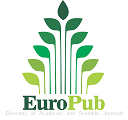Seasonal Factors and The Potential of Artificial Insemination (AI) in Dairy Cattle
Abstract
Dairy cattle are dominant milk producer in Indonesia. Several programs have been carried out to increase the population of dairy cattle and milk production, one of which is Artificial Insemination (AI). Indonesia is a tropical country that has two seasons, namely the rainy season and the dry season. This study was conducted in the KPSBU Lembang working area, West Java, from November 2019 to January 2020. Rainfall data from the BMKG Dramaga Climatology Station and artificial insemination (AI) records of Frisian Holstein dairy cattle from 2017 to 2019 were collected. AI success was assessed using the Service per Conception (S/C) and Conception Rate (CR) parameters, obtained through pregnancy checks two months after insemination. Pregnancy checks were conducted using rectal palpation to confirm conception. Statistical analysis focused on seasonal differences in reproductive performance based on these metrics. Highest S/C value was 2.02 with CR Value 53.27% on rainy season with rainfall 253.67 mm month-1. The analysis showed a strong correlation (α = 0.005) between S/C and CR value (0.89*), very weak correlation between rainfall with S/C (r = -0.05) and CR (r = -0.08). The results of the research show that the rainy season and the dry season are not the main factors affecting the AI in dairy cattle, however they didn’t directly affect the season to increase the productivity of saplings.















